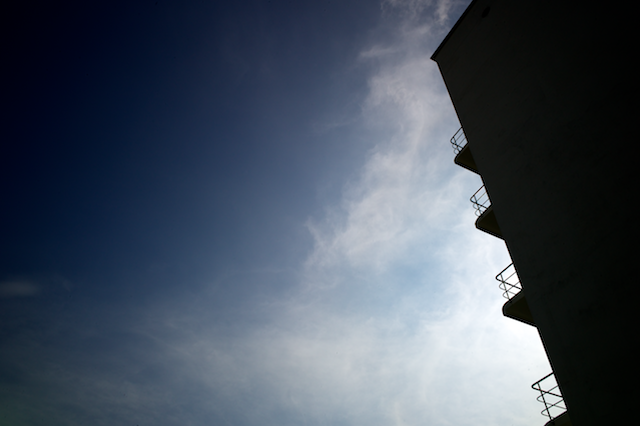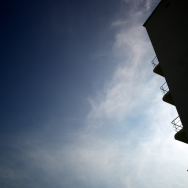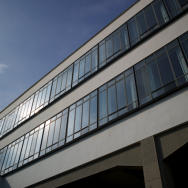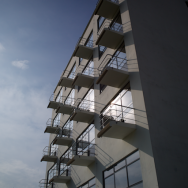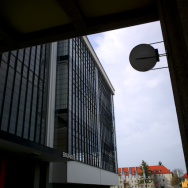The photo blog returns with one of the most recognisable buildings in European design history – the Bauhaus, Dessau.
As with the previously featured Barcelona Pavilion, everything is not exactly as it seems with the Bauhaus. Sitting on the banks of the Elbe, Dessau was an industrial centre during the Second World War and was almost bombed out of existence. The design school escaped as a shell, only being restored years later under the East German government.
Now something between a large museum shop and rudimentary design school, Walter Gropius’s design has been fully restored, from its iconic signage right down to the windows and balconies, famously captured in Marianne Brandt’s self-portrait.
Gropius’s other designs in Dessau have faced similar hardships to the Bauhaus building itself. In addition to the Meisterhauser – the grand villas built for the great and good of the Bauhaus teaching faculty, Kandinsky, Klee, Moholy-Nagy, etc – there is the Dessau-Törten development, a more modest estate of low-cost, mass housing.
While the Bauhaus itself has only had to contend with the force of allied aerial bombing, Gropius’s Dessau-Törten has clearly not found itself quite to the taste of its residents. While the influence of Walter Gropius and the Bauhaus can still be seen in contemporary developments across the world, the homeowners of Dessau have decided his classic modernist lines and sleek, white designs could really do with some brightening up, and in most cases, some pebbledashing and stone cladding. You’d think these people where living in homes rather than design classics.
